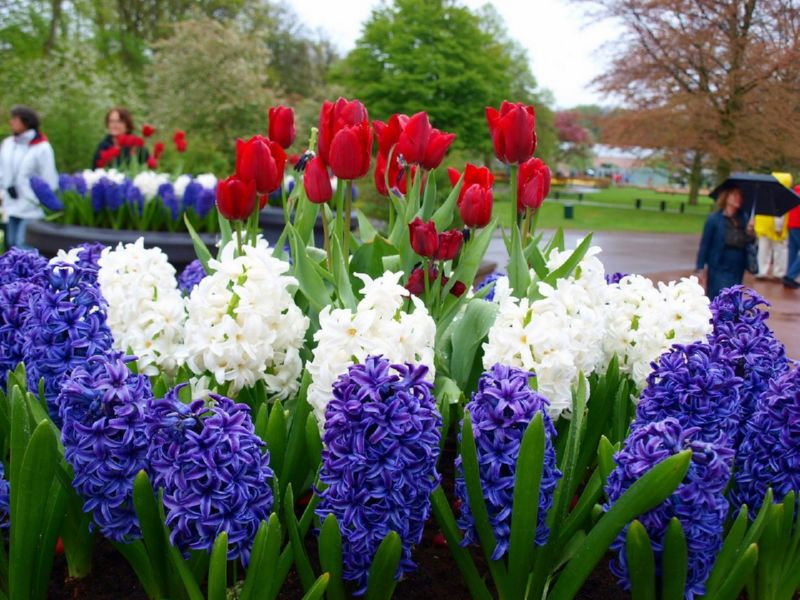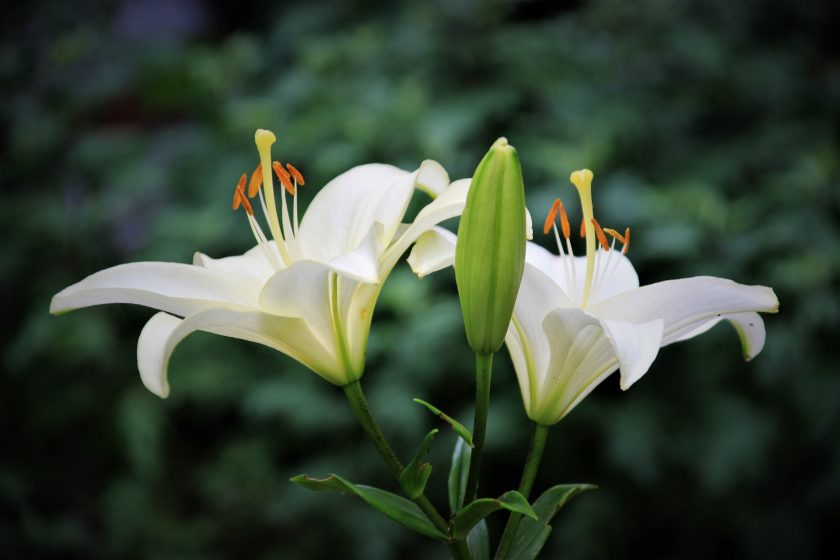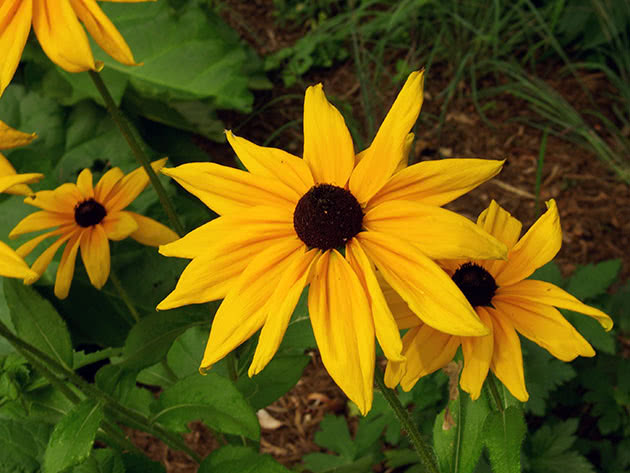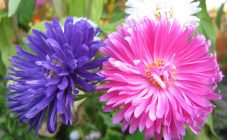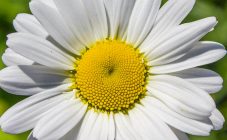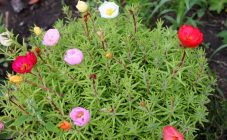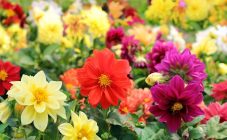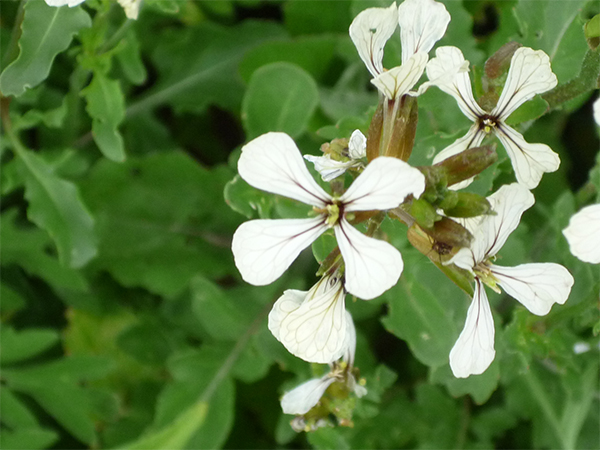Content:
It is not very easy for novice flower growers to understand the variety of all perennial flowers. After all, I want to choose the most beautiful and unpretentious option. There are many options for the most beautiful perennial flowers that will give divine bloom, while not requiring complex maintenance.
Growing the most beautiful perennials
Each owner strives to make his site beautiful and unique. Before planting, you should decide on the plants.
The second point to consider is the landing zone, namely a sunny or dark place.
When planting sun-loving plants, any partial shade should be excluded. Shade-loving crops, respectively, should be located in the area of buildings and fences. If these rules are not followed, you may not get the desired brightness of colors or their declared size.
Also, when looking for beautiful plants, they take into account the characteristics of the area and the general layout of the territory. If the plot is small, then it is better to choose compact crops. You can supplement such low flowers with dwarf plants.
If you want to create a hedge, you should combine tall and short plants to get a beautiful lush visual picture, otherwise, you can simply grow tall, unattractive thickets.
The most beautiful perennial in the world
It is very difficult to single out the most beautiful flower in the world, since everyone has their own taste. The debate about which perennial is more beautiful will never stop. But many will agree that the most worthy candidates for this title are 3 flowers: peony, rose and lily.
Peonies
This is a herbaceous perennial that does not require a description, which pleases owners with flowers at the end of May. A wide variety of varieties allows you to create unique compositions. The plant is in great demand, not only because of its beautiful appearance. During the flowering of peonies, the garden is filled with a pleasant aroma. Peonies are unpretentious and grow easily anywhere.
Roses
Roses have fascinated people with their beauty for a long time, so they can be found in almost every garden of any summer cottage. You can choose varieties so that they bloom from May to October.
Roses are very beautiful flowers, but also demanding, when growing them you should pay maximum attention to exactly follow all the rules of agricultural technology.
Lilies
Bulbous herbaceous perennial, which has about 100 species and 4 thousand varieties. Feels great in moderate temperatures and slightly damp soil.
Lilies differ in flowering periods, height, flower shape.
TOP 10 perennials
All colors are unique and beautiful, but a group of 10 plants can be distinguished, which give colorful flowering to their owners. These are the most beautifully flowering perennial flowers:
- Astilba. An amazing plant that blooms magnificently and beautifully in the shade. Depending on the variety, the height can be from 20 cm to 1 m. The main condition is moderate soil moisture.
- Rudbeckia is brilliant.A plant that blooms in late summer and early autumn with a bright yellow color. The main condition for successful cultivation is a bright, sunny place.
- Shrub aster. A very beautiful perennial culture that forms spherical bushes about half a meter high. One stem of this plant forms a bouquet during the flowering period. This shrub, even without flowers, will decorate any part of the garden. Prefers sunny areas and fertile nutritious soils.
- Helenium is hybrid. An unpretentious long-flowering plant with abundant flowering. With the right selection of varieties with different flowering times, you can provide the garden with flowers every day from June to October. They prefer regular watering.
- Geranium is great. A beautiful plant, up to half a meter high, with lush flowering. It grows well both in sunny places and in the shade. Flowering does not last too long: from May to June, but from August the leaves turn red, which will decorate the garden until late autumn.
- Japanese anemone. Elegant flowers with delicate flowers and foliage. Flowering occurs at the end of August. They prefer places with fertile soil in partial shade.
- Oriental poppy. A very beautiful plant that pleases with flowers in May-June. There are varieties that bloom in August. Grows in sunny areas with nutritious, moderately moist soil.
- Rudbeckia. Its appearance is able to outshine the popular aster. A feature is reproduction by root suckers, which quickly fill the empty space on the site. Beautiful bouquets in vases can decorate the table for a long time.
- Dicenter. A frost-resistant plant that adores moist fertile soil in partial shade. The height of the shrub reaches 60 cm. It is a romantic, beautiful perennial with a flower of an unusual shape, because of which it has another name - "broken hearts".
- Sage. Decorates a garden or vegetable garden not only with its beautiful flowering, but also with a divine aroma. Flowering begins in June and lasts until late autumn. Sage does not exceed 50 cm in height, so it can be used in any type of flower garden.
Features of the reproduction of perennial flowers
A feature of perennial plants is that they germinate in one place for several seasons. Reproduction is carried out in different ways. Seeds, cuttings of ampelous flowering flowers and other species are sold in a wide range in flower shops, so there will be no difficulty in purchasing good quality planting material. Every season, even more interesting and original novelties of perennials appear.
Seed propagation
Sowing can be done almost all year round, both in spring and autumn. Seeds are sown in open or closed ground.
Most of the perennials are sown in spring:
- In March-April, plants such as decorative bows, delphinium, loosestrife and many others are sown.
- In April-May there are planting of carnations, host, geraniums.
- In July-August, crops that quickly lose their germination should be sown: muscari, lumbago, marigold.
- In late autumn, they are sowing perennial varieties: primroses, asters, aconites, irises, violets and so on.
To reproduce perennial crops with seedlings, seeds should be planted at home in January-February.
Vegetative propagation
When breeding perennial crops, various vegetative methods can be used, depending on the plant itself:
- Division of tubers;
- Cuttings;
- Children;
- Tubers;
- Bulbs, etc.
It should be planted in spring or early fall. In the latter case, it is important to plant the plants before the onset of frost, so that they have time to take root.
Caring for beautifully blooming flowers
With proper care of perennials, you can achieve beautiful flowering and healthy appearance of plants. Proper care consists in performing certain activities.
Loosening and weeding
Weeding should be carried out constantly to prevent overgrowth, especially insemination of weed grass.
Weeds are removed carefully so that no roots remain in the ground. Also, do not forget about loosening. This will help the root system get the right amount of moisture and oxygen. Loose the soil very carefully so as not to damage the roots.
Top dressing and watering
Watering is performed depending on weather conditions. It is important not to allow the soil to dry out, but stagnant water can also lead to death.
It is recommended to apply fertilizers 2 times a season:
- In early spring, nitrogen-dominated compounds.
- Before flowering, complex fertilizers are applied, which must contain potassium and phosphorus.
Mulching
After the first weeding, the soil near the roots is mulched, this will help create more favorable conditions. A layer of mulch of 10 cm is formed from humus or compost.
Preparing for winter
Most of the perennials do an excellent job with winter frosts, but even they do not provide additional shelter for the cold period. Winters with little snow and severe frosts are especially dangerous. At the onset of the first frost, the plant should be covered with peat or humus. With a very strong cold snap, you need to additionally cover the plants with spruce branches, autumn foliage or brushwood.
As you can see, the choice of perennial plants for the garden is very large. With the right approach to planting and adherence to the basic rules of agricultural technology, you can create beautifully blooming flower beds throughout the season. Even before the very frosts, the garden will delight with a variety of colors.
